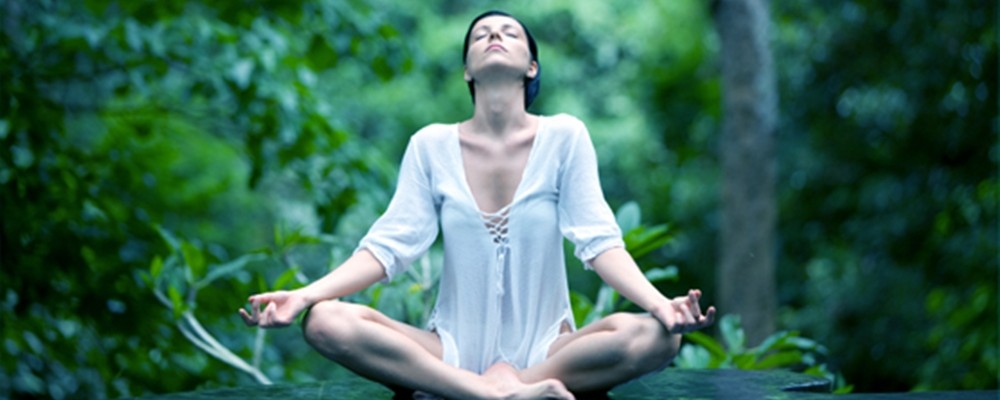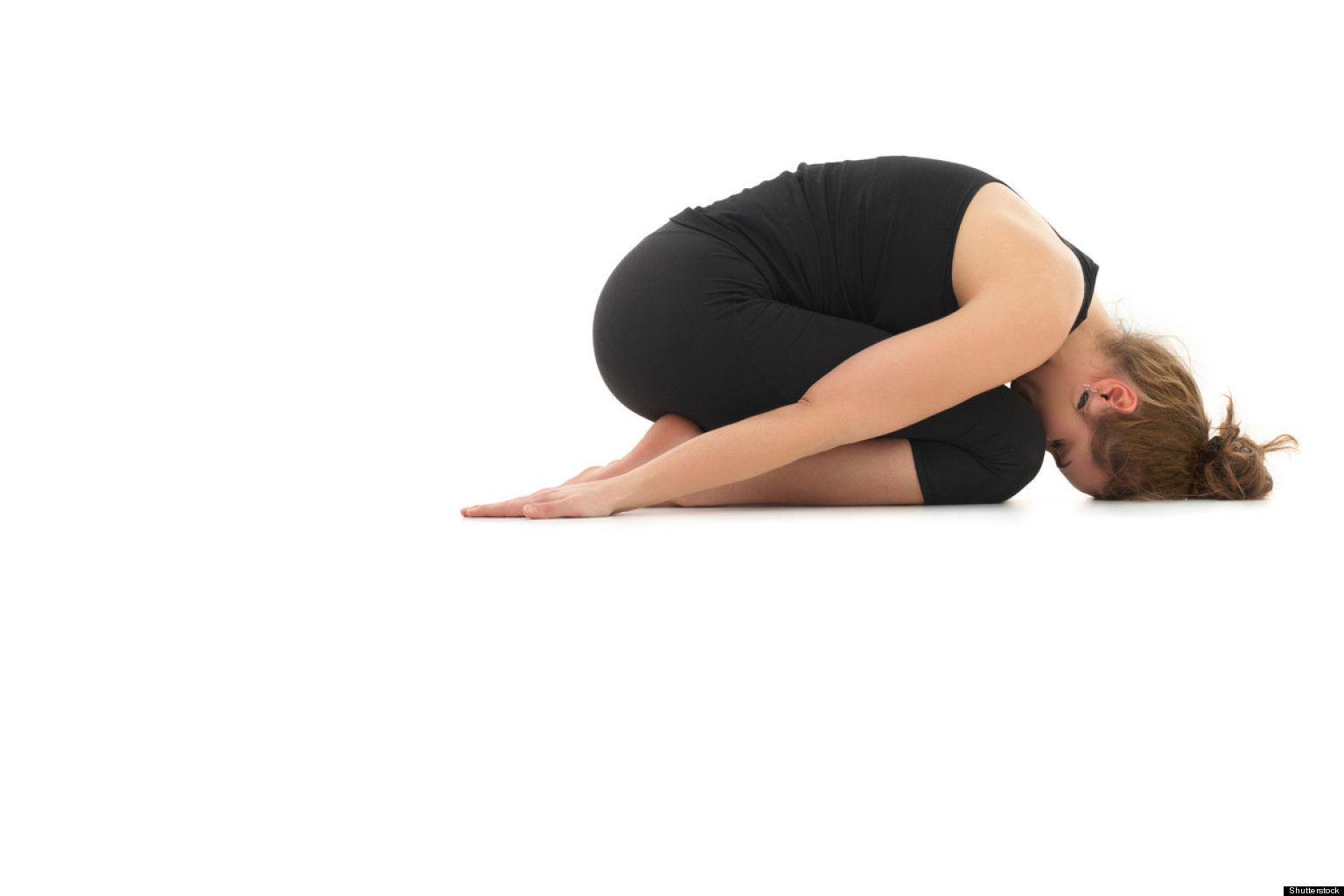Yoga is commonly known for its ability make you more flexible. But even if your goal isn’t to do an Instagram-worthy backbend, you can still benefit from a consistent yoga practice.
We asked Ashleigh Sergeant, yoga expert and head of content for Gaia, to help us dispel some of the most common yoga myths and explain why yoga is for everybody.
1. Myth: You need to be flexible and fit to practice yoga
One of the things Sergeant hears people say all the time is, “I can’t do yoga; I’m not flexible.” However, there is a type of yoga for everyone, she says. You don’t need to be super bendy, lithe, or an elite athlete to practice.
Truth: Sergeant defines the physical form of yoga as any time you’re able to tune into your body and focus on movement and breath. A physical yoga practice should be tailored to meet your personal needs. If your muscles are tight, yoga can help you loosen up. If you are overly flexible, it can help you gain strength. Yoga really has the ability to meet you where you’re at and take you somewhere different, Sergeant says.
2. Myth: Yoga is a physical practice.
While you can see when someone is performing a physical posture or asana, you can’t actually tell that someone is doing yoga just by looking at them, Sergeant says.
Truth: “Yoga is a state of attention,” she says. It isn’t just about the physical poses, and it wasn’t designed to be an inherently physical practice. Yoga is an awareness that we bring to all physical activities and the things that we do in everyday life.
The physical practice would only be qualified as ‘yoga’ if you’re conscious of where each part of your body is, and your breath is naturally flowing, she says. So you could be doing yoga while running, cooking, washing the dishes, as long you’re bringing an awareness and intention to what you’re doing.
3. Myth: Fitness is the primary benefit of doing yoga.
Sometimes yoga can be a solely physical practice, and for some people that can be enough, Sergeant says. But the original intention of yoga was not to improve fitness, and many people may need something more cardiovascular or active to meet their fitness needs and goals.
Truth: “The concept of yoga being something for fitness is a very Western idea that has come about in the past 100 years,” Sergeant says. She believes that some of the greatest benefits of yoga are improved sleep quality and a reduction in stress, pain, and anxiety. Plus, you don’t need to practice a specific type of yoga to experience these benefits; you just need to have a positive or healing intention, an understanding of how to safely execute the poses, and a consistent practice over time.
Daily life is fairly strenuous on our bodies, minds, and spirits, and yoga can be a great antidote to that. “I run, lift weights, and hike for my physical fitness,” she says. “I do yoga as a way to counterbalance the other things that I do. If someone is only using yoga for a physical practice, it’s very likely that they’re not receiving the full benefits of what a yoga practice has to offer.”
4. Myth: Yoga requires structured, deep breathing.
There are lots of practices in yoga that are based on the breath. For example, you can control the length of your inhale or exhale to address fatigue or agitation. However, it’s possible to breathe too deeply and, in turn, create more anxiety, Sergeant says.
Truth: There is a time and place for structured breathing because it can keep you focused, or even remind you to breathe. But the goal is to help the breath along enough so that it’s able to flow naturally and spontaneously, she says. According to Sergeant, this is the most healing type of breath, because it means the body is regulating itself toward a state of relaxation, which can also be used as a tool to reduce anxiety.
5. Myth: Yoga only happens on the mat.
Truth: You can create the same state of awareness in life that you do on the mat, says Sergeant. When you practice a difficult pose, you might think, “This really hurts. I don’t want to be here,” but you learn to relax into it and move through it. You can also apply this idea outside of class.An example is when you’re stuck in traffic or facing a difficult conversation. Instead of reacting from a place of agitation, you can work through it by breathing and relaxing into the present moment—no mat required. In this situation, you are helping your mind by using your body and breath, the same way you do in your yoga practice, she says.
6. Myth: All types of yoga are pretty much the same.
If you take a yoga class and don’t like that specific style, you shouldn’t assume that yoga isn’t for you. Instead, it’s probably a sign that the class or instructor didn’t match your intention for doing yoga at that moment.
Truth: “There are as many types of yoga as there are people doing yoga,” Sergeant says. “It is really an opportunity to have your own experience of wellness.” For example, if you’re looking for an athletic, sweaty workout, there is a style for that. If you are looking to heal an injury, there are therapeutic forms for that. If you are looking to sleep better or have less anxiety, there are aspects of yoga that can address that, she adds.
Sergeant recommends asking yourself why you want to do yoga and using that as a way to find a practice that is best suited for you. If you take a class, arrive early to speak with the teacher and let them know what you’re interested in getting out of the practice. If it’s an online class, you can read the teacher’s bio or class description to see if it might match your interests.
It’s really important to explore your options, she says. It’s also natural for your intentions to evolve. So why you start practicing may not be the same reason you continue after several years of practice.
7. Myth: You have to go to a studio to practice yoga.
Of course, there are plenty of resources for you to do yoga at home, but you should really have a go-to studio to have a respectable practice.
Truth: It’s very helpful to be in the presence of a teacher, but it’s equally important to have a relationship with yourself, says Sergeant. There are plenty of benefits of taking class in a studio, but she likes to invite people to create their own personal practice at home, too, because then you can choose what works for you, your body, and your schedule that day, which you won’t necessarily get in a studio. If you are unsure of where to start, Sergeant recommends exploring different teachers and classes online. Eventually, you may feel comfortable practicing totally solo.
8. Myth: Progress is measured by the ability to do extreme backbends and arm balances.
Well, what’s the point if you can’t humblebrag about your practice on Instagram with a scenic handstand shot or a wheel pose on top of a mountain?
Truth: While yoga is often portrayed on social media as a practice that centers around crazy-looking poses, Sergeant says you don’t need to be an acrobat to practice. While there’s nothing wrong with practicing advanced postures, she believes the essence of yoga is about improving awareness.
“As I evolve in my practice, I do fewer advanced poses, and it’s not because I’m aging; it’s because I find that the most therapeutic and effective postures are the ones that are breath-focused and help promote a relaxed state,” she says.
To measure your progress, Sergeant suggests tracking how you feel. Some questions to ask include, “Are you experiencing less pain or stiffness?” and “Are you able to be more patient and less anxious?” At the end of the day, yoga is really about finding ways to enjoy the experience of life more, she says.
From: Greatist



